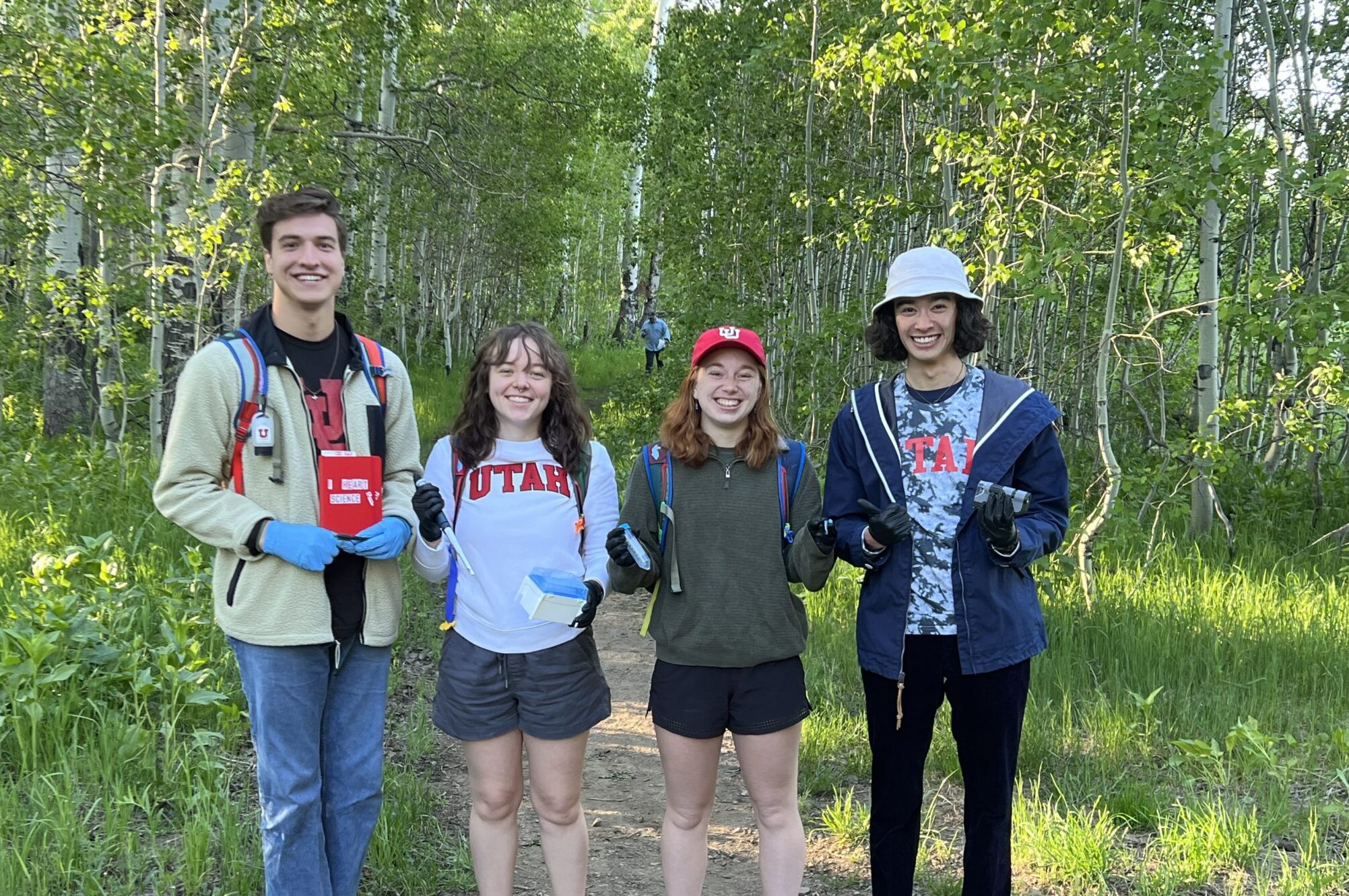CS
Cancer Systems Modeling
FD
Analysis of Free Fungi Dissemination
MB
Making and Breaking Bonds
FP
Fungal Pathogenesis in a Changing Climate
BC
Biochemistry of Signaling in Bacterial Chemotaxis
SP
Spintronics
PB
Pollination Biology
GO
Genetics of Overwintering in Spider Mites
NG
Geochemistry of Noble Gasses
AP
Impact of Air Pollution in Susceptible Populations
NS
Natural Sunscreens in the Great Salt Lake
SB
Social Belonging in Introductory STEM Classes
HW
Human Wildlife Coexistence
AR
Hallar Aerosol Research Team (HART)
PC
Plant Coevolutions with Pathogens
CB
Cancer Biology
PS
Designing Three-Dimensional Peptide Scaffolds
VB
Vector Biology, Surveillance, and Management (SLC Mosquito Abatement)
LC
Training in Lipotoxicity-Induced Cardiovascular Complications
CD
Pathogens and Chronic Disease
AE
Adventures in Electrochemistry
IC
Studying Ion Channels Using Marine Natural Products
BD
Biosynthetic Diversity of the Animal World
NP
Natural Products: Chemistry of the Great Salt Lake
DB
DNA Barcoding
TD
Topological Data Analysis
MS
The Mathematics of SET
NP
Nonequillibrium Physics of Information
CS
Cell Signaling in Development and Cancer
MR
Myocardial Recovery from Heart Failure
MA
Underexplored Molecular Architectures
BN
Biogeography of Nematodes
BC
Biophysics of Cancer
PL
Plant Light Sensing and Greening
PI
Plant Immunity and Amino Acids/Volatiles
MM
Multi-Messenger Science with IceCube Neutrino Observatory
PR
Plant Responses to a Warming Climate
TM
Topological Materials and Devices
CP
Cancer Cell Plasticity
PT
Pharmacology and Toxicology
RL
Exploring the Role of Land in the Global Climate System
TE
Trace Elemental and Isotopic Biochemistry
FD
Monitoring Forest Disturbance from Space
BC
Botanical Conservation (Red Butte Garden)
WC
Zoo Based Wildlife Conservation (Hogle Zoo)
PM
Precision Medicine and Rare Disease
HE
Climate Change and Utah's High Elevation Ecosystems
MS
Mining Safety Enhancement with Generative AI
MA
Analysis and Modeling of Ammonites
EE
Evolutionary Ecology and Epidemiology












 What to Expect in the SRI
What to Expect in the SRI


